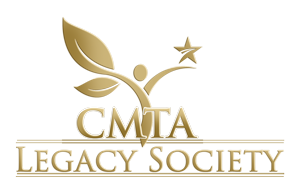With the incredible support of the CMT community, Esther Wolfs, PhD, and her team at FIERCE Lab located at Hasselt University in Belgium have made tremendous progress in their groundbreaking research to develop a new model for CMT1A using dental pulp stem cells (hDPSC). This research, funded by CMTA with a grant of $98,890, aims to study the mechanisms behind CMT1A by transforming human dental pulp stem cells into Schwann cells, which are key in producing and maintaining peripheral nerve myelin.
Thanks to the overwhelming response from the CMT community—20 donors representing 8 different subtypes via the Patients as Partners in Research program, with some donating more than one wisdom tooth—the team gained critical materials to push this innovative project forward.
A Community-Driven Success
This success is a testament to the power of community collaboration. Through CMTA’s Patients as Partners in Research initiative, individuals living with CMT1A could directly contribute to the scientific understanding of their disease. The donated wisdom teeth allowed Dr. Wolfs and her team to develop patient-derived Schwann cells for their CMT1A model, significantly enhancing their research capabilities.
“Without the overwhelming generosity of the CMT community, we wouldn’t have been able to gather such a robust sample set,” said Dr. Wolfs. “This has greatly accelerated our research and opened up new avenues for understanding the disease mechanisms of CMT1A.”
Key Findings and Next Steps
Using the donated teeth, Dr. Wolfs and colleagues successfully replicated the disease mechanisms of CMT1A in Schwann cells by inducing PMP22 overexpression, which mimics the genetic abnormalities found in CMT1A patients. The team has already observed critical changes in cell behavior and gene expression consistent with the disease’s effects on Schwann cells, validating the use of hDPSC as a model for CMT1A.
Moving forward, they plan to deepen their exploration of Schwann cell behavior in CMT1A using genetic and pharmacological approaches, which could lead to developing new therapies. The project has also sparked further efforts to refine this laboratory model as a platform for future drug screening and treatment development beyond CMT1A, including CMT1E, HNPP, CMTX1 (aka CMT1X, CMTX), CMT2A, CMT2C, CMT2T, and CMT4A—the additional subtypes from which donations were received.
Register With Patients as Partners in Research Today
Not yet registered with Patients as Partners in Research? Click the button below to register today! Registering ensures you are the first in line for any CMT research opportunity you might be eligible for and are interested in. Registering will ensure you are updated on all the latest news and developments in CMT research. Registration is free, and all who have CMT are invited to join.
Create Your Patients as Partners in Research Profile
Published On: October 29, 2024





